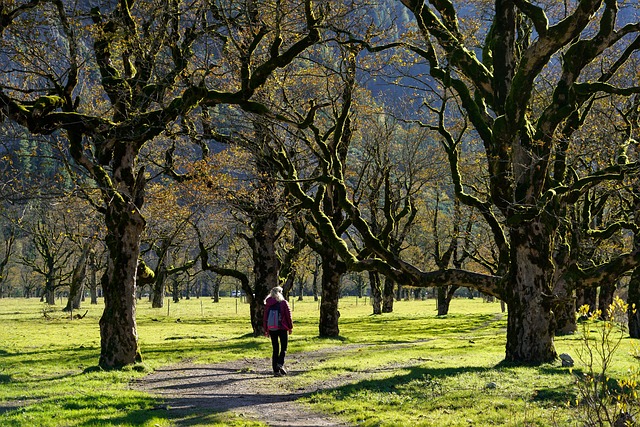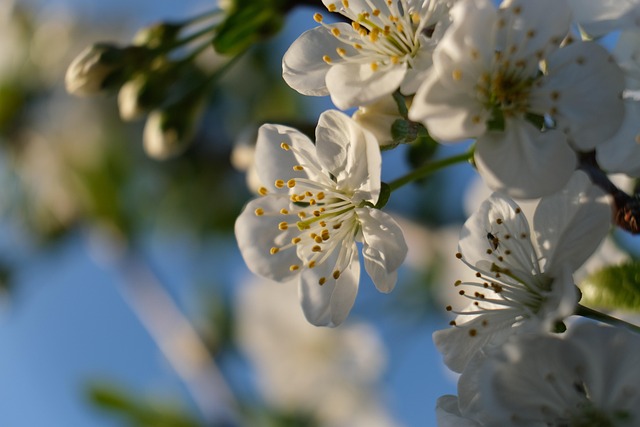Plano, Texas' urban forest thrives with tailored care based on its unique climate, seasons, and soil types. Effective Plano TX tree maintenance includes regular pruning for disease prevention and new growth, fertilization to meet species-specific needs, and pest control against local threats. Seasonal dynamics guide care: spring for active growth, fall for hydration and pest/disease prevention, and winter for monitoring dead branches and snow damage. Early issue identification through inspections allows proactive solutions, with treatments ranging from preventive to specialized techniques. Proper planting practices and tailored pruning, fertilization, and pest management ensure Plano's trees remain vibrant and healthy, enhancing the city's green spaces.
Plano, TX, boasts a vibrant urban landscape, but proper tree maintenance is essential for keeping these natural assets healthy and safe. This comprehensive guide explores the unique needs of tree care in Plano, covering seasonal considerations, common issues, pruning techniques, fertilization practices, and selecting suitable species. By understanding these aspects, homeowners and professionals can ensure the longevity and beauty of their urban forest. Master these Plano TX tree maintenance practices for a lush, thriving urban environment.
- Understanding Plano TX Tree Maintenance Needs
- Seasonal Considerations for Tree Care
- Common Tree Issues in Plano TX and Solutions
- Pruning Techniques for Healthy Trees
- Effective Tree Fertilization Practices
- Choosing the Right Tree Species for Your Plano Yard
Understanding Plano TX Tree Maintenance Needs

Plano, Texas, like many urban areas, has a diverse range of trees that require specific care to thrive. Understanding the unique Plano TX tree maintenance needs is crucial for both homeowners and local authorities to ensure a healthy and vibrant urban forest. The city’s climate, varying seasons, and soil types all play a significant role in dictating what kinds of trees grow there and how they should be maintained.
Regular Plano TX tree maintenance includes tasks such as pruning, fertilizing, and pest control, which help keep the trees robust and disease-free. Proper pruning techniques are essential to remove dead or diseased branches while promoting new growth and maintaining the tree’s natural shape. Fertilization helps meet the nutritional requirements of different tree species, enhancing their overall health and appearance. Additionally, monitoring and controlling pests and diseases specific to Texas is vital to protect the city’s trees from potential damage.
Seasonal Considerations for Tree Care

When it comes to Plano TX tree maintenance, understanding seasonal considerations is key to keeping your trees healthy and vibrant. In the spring, after the last frost, trees begin their active growth phase, making it an ideal time for pruning, fertilizing, and any necessary repairs. This season also offers a chance to address any winter damage before new growth begins.
In contrast, fall presents specific care needs as trees prepare for dormancy. Pruning during this period is generally not recommended, but ensuring proper hydration and applying seasonal fertilizers can help strengthen trees against potential pests and diseases. Winter, while seemingly dormant, requires regular monitoring for dead branches and snow/ice damage, which can negatively impact tree health if left unattended.
Common Tree Issues in Plano TX and Solutions

In Plano TX, tree maintenance is an essential aspect of keeping urban landscapes healthy and vibrant. Common issues include disease, pest infestations, structural weaknesses, and improper planting. For example, Dutch elm disease has historically been a significant problem, requiring expert diagnosis and treatment to prevent widespread loss. Regular inspections can identify these issues early, allowing for proactive solutions.
Solutions vary based on the issue but often involve preventive measures like proper pruning, regular watering, and targeted treatments. For diseases and pests, professionals employ eco-friendly pesticides or biological control methods. Structural problems may necessitate cable bracing or root pruning to stabilize trees. Proper planting techniques, including suitable soil preparation and adequate spacing, also reduce future issues. Plano TX tree maintenance services play a crucial role in addressing these challenges, ensuring the longevity and beauty of the city’s green spaces.
Pruning Techniques for Healthy Trees

Pruning is an essential aspect of Plano TX tree maintenance, promoting healthy growth and ensuring the longevity of your trees. The technique involves carefully selecting and removing specific branches to encourage better development. It’s crucial to understand that pruning isn’t just about aesthetics; it helps shape the tree, allowing more sunlight penetration to all parts of the canopy, which is vital for robust foliage and overall health.
There are various pruning techniques suitable for different tree species and their unique growth patterns. Thinning involves removing branches to reduce density, improving air circulation and light penetration. Heading back encourages new growth by cutting back branches to a bud or lateral branch, while crown reduction aims to thin out the entire canopy to reduce weight and stress on older trees. Regular and proper pruning contributes to the overall health and beauty of your landscape, making it an integral part of Plano TX tree maintenance practices.
Effective Tree Fertilization Practices

In the realm of Plano TX tree maintenance, effective fertilization practices are paramount for promoting healthy growth and vibrancy. The right balance of nutrients can significantly enhance the overall well-being of trees, making them more resilient to diseases and environmental stressors. When implementing fertilization strategies, professionals in Plano TX prioritize understanding soil composition and specific tree species’ needs. This tailored approach ensures that each tree receives the precise combination of nitrogen, phosphorus, and potassium required for optimal development.
By adopting best practices, such as incorporating organic matter and applying slow-release fertilizers at recommended intervals, maintenance experts foster robust root systems and lush foliage. These techniques not only support immediate visual improvements but also contribute to long-term health. Regular monitoring and adjustments ensure that fertilization remains effective, addressing changing seasons and environmental conditions that can impact a tree’s nutritional requirements in Plano TX.
Choosing the Right Tree Species for Your Plano Yard

When considering Plano TX tree maintenance, selecting the appropriate tree species is a fundamental first step. The right trees can enhance your Plano yard’s aesthetics, provide shade, and contribute to environmental sustainability. Different areas within your property may have distinct characteristics—sun exposure, soil conditions, and space constraints—that dictate which tree varieties will thrive. Researching local climate zones and soil types specific to Plano is crucial for successful tree maintenance.
Focus on native tree species that are well-adapted to the region to ensure robust health and resilience against pests and diseases. These trees also support local ecosystems by providing habitats for wildlife, fostering biodiversity, and contributing to a healthier environment. By aligning your tree selection with expert Plano TX tree maintenance practices and considering both aesthetic preferences and ecological benefits, you can create a vibrant and sustainable landscape that adds value to your home and community.
Maintaining healthy trees in Plano, TX, requires a comprehensive approach that considers seasonal changes and addresses common issues. By understanding the unique needs of your urban forest, you can ensure optimal growth and longevity. Implementing effective pruning techniques, choosing suitable tree species, and adopting proper fertilization practices are key components of responsible tree care. With these strategies in place, homeowners and local authorities can preserve the beauty and environmental benefits that trees provide to Plano’s landscape.






